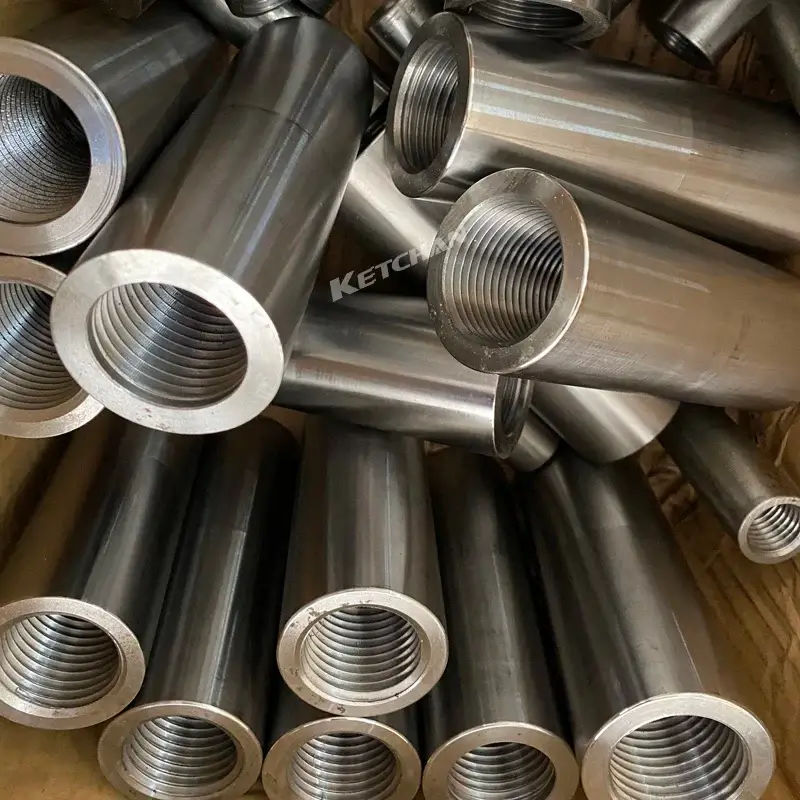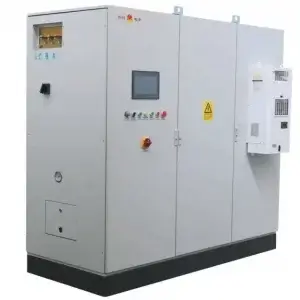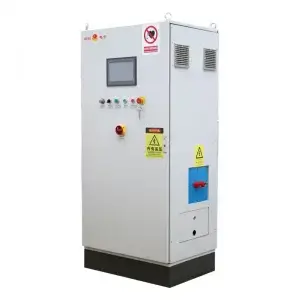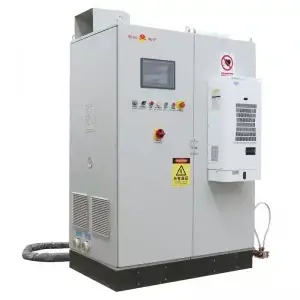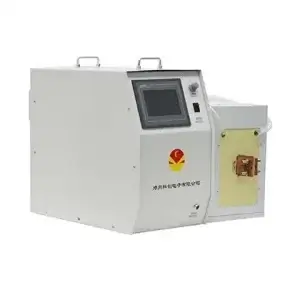What is an Inner Hole Induction Hardening Machine?
The complete inner hole induction hardening process is as follows: A robotic arm grips an induction coil fixture that holds two workpieces and two inductors simultaneously, enabling induction quenching of two inner holes with different diameters in one cycle. The robot completes positioning in 3 seconds, followed by an 18-second heating and water-spraying cycle. For a component with 8 arc-surface holes (φ26), the total process time is 168 seconds (8 cycles). For a φ35 hole, the robot rotates the fixture for 5 seconds of positioning, followed by an 18-second heating/spraying cycle; the total time per piece is ≤4 minutes.
How Does Inner Hole Induction Hardening Work?
While the basic circuit theory remains unchanged, advances in power devices have driven significant progress in circuit design and technology implementation:
-
Power Conversion:
- In rectifier and inverter circuits, modular devices replace single power components. For higher power requirements, solid-state induction heating machine power devices are connected in series or parallel.
-
Control & Protection:
- Digital and application-specific integrated circuits (ASICs) are used in control and protection circuits, simplifying design and enhancing the reliability of the complete induction heating system.
-
Component Innovations:
- New circuit components, such as non-inductive capacitor modules, non-inductive resistors, and power ferrite materials, have been adopted.
-
Frequency Range:
- The equipment covers a wide frequency spectrum (0.1–500 kHz), encompassing medium frequency, high frequency, and super audio solid-state induction heating applications.
-
Efficiency & Compactness:
- High conversion efficiency delivers significant energy savings.
- The compact design saves 66%–84% space compared to traditional thyristor-based equipment.
-
Safety & Reliability:
- Robust protection circuits ensure high operational reliability.
- The power supply operates without high voltage at the output, enhancing safety.
